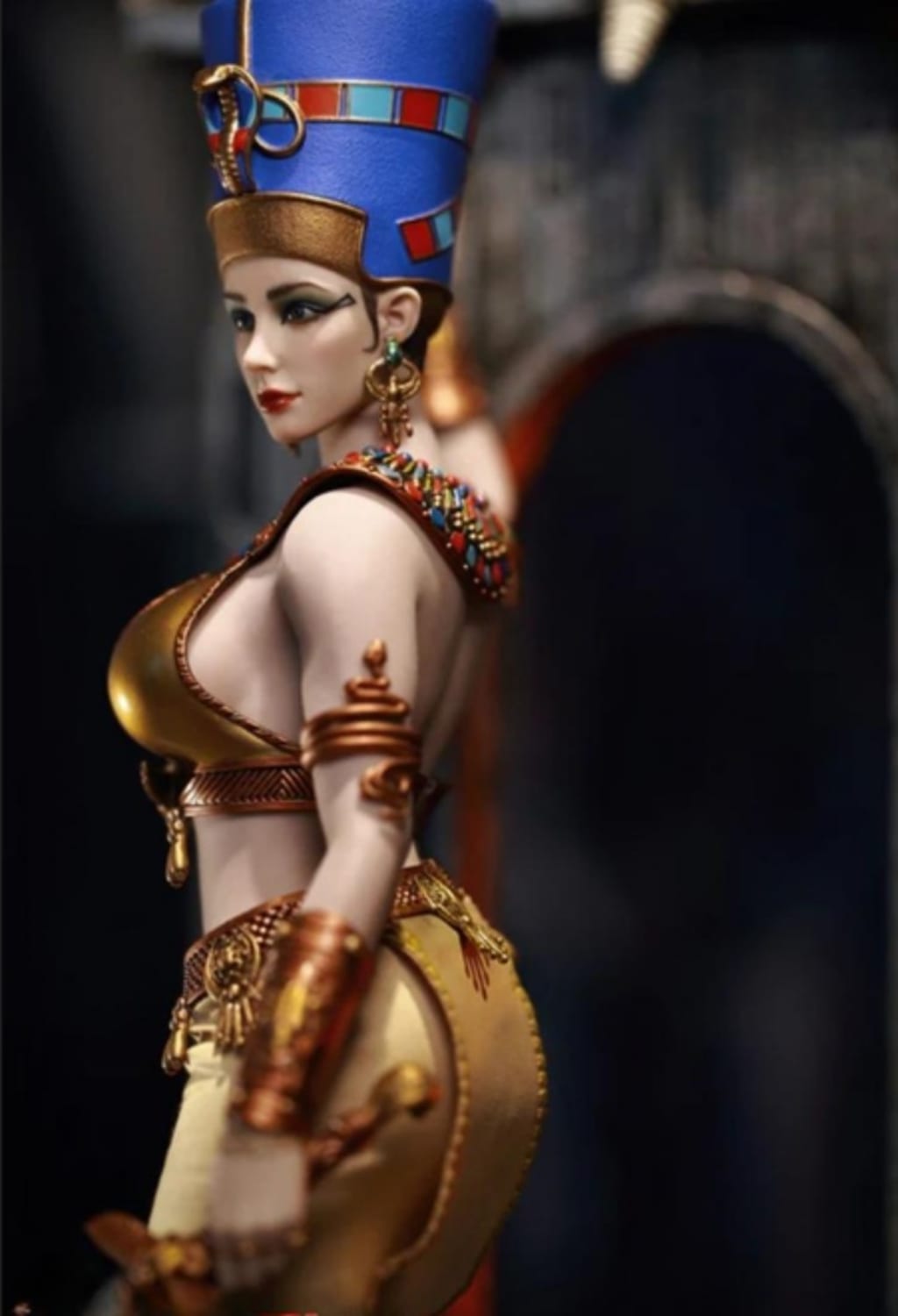
What a queen
Nefertiti, (prospered fourteenth century BCE), sovereign of Egypt and spouse of Lord Akhenaton (previously Amenhotep IV; ruled c. 1353-36 BCE), who assumed an unmistakable part in the clique of the sun god known as the Aton.
Nefertiti's parentage is unrecorded, in any case, as her name deciphers as "A Wonderful Lady Has Come," early Egyptologists accepted that she probably been a princess from Mitanni (Syria). There is solid conditional proof, in any case, to recommend that she was the Egyptian-conceived girl of the squire Ay, sibling of Akhenaton's mom, Tiy. Albeit nothing is known about Nefertiti's parentage, she had a more youthful sister, Mutnodjmet. Nefertiti bore six little girls in something like 10 years of her marriage, the senior three being brought into the world at Thebes, the more youthful three at Akhetaton (Amarna). Two of her little girls became sovereigns of Egypt.
The earliest pictures of Nefertiti come from the Theban burial chambers of the regal steward Parennefer and the vizier Ramose, where she is shown going with her significant other. In the Theban sanctuary known as Hwt-Benben ("Manor of the Benben Stone"; the benben was a clique object related with sun powered custom), Nefertiti assumed a more conspicuous part, usurping royal honors to act as a minister and propose to the Aton. A gathering of blocks recuperated from Karnak (Luxor) and Hermopolis Magna (Al-Ashmunayn) shows Nefertiti partaking in the custom destroying of the female foes of Egypt. She wears her own special hood — a tall, straight-edged, level beat blue crown.
Toward the finish of Akhenaton's fifth regnal year, the Aton had turned into Egypt's predominant public god. The old state sanctuaries were shut and the court moved to a reason constructed capital city, Akhetaton. Here Nefertiti kept on assuming a significant strict part, loving close by her better half and filling in as the female component in the heavenly ternion framed by the god Aton, the lord Akhenaton, and his sovereign. Her sexuality, underlined by her exaggeratedly female body shape and her fine material pieces of clothing, and her ripeness, underscored by the consistent appearance of the six princesses, show that she was viewed as a living fruitfulness goddess. Nefertiti and the regal family showed up on confidential reflection stelae and on the walls of nonroyal burial chambers, and pictures of Nefertiti remained at the four corners of her better half's stone coffin.
A few students of history, having thought of her as reliefs and sculpture, accept that Nefertiti might have gone about as sovereign regnant — her significant other's coruler instead of his partner. In any case, the proof is in no way, shape or form decisive, and there is no composed proof to affirm her political status.
Not long after Akhenaton's twelfth regnal year, one of the princesses kicked the bucket, three vanished (and are likewise dared to have passed on), and Nefertiti evaporated. The least difficult deduction is that Nefertiti likewise kicked the bucket, yet there is no record of her passing and no proof that she was at any point covered in the Amarna illustrious burial place. Early Egyptologists, misconstruing the text based proof recuperated from the Maru-Aten sun sanctuary at Amarna, reasoned that Nefertiti had isolated from Akhenaton and had resigned to live either in the north royal residence at Amarna or in Thebes. This hypothesis is presently disparaged. Others have proposed that she outlasted her better half, took the name Smenkhkare, and controlled alone as female ruler prior to giving the lofty position to Tutankhamen. There is great proof for a Ruler Smenkhkare, however the ID in the twentieth hundred years of a male body covered in the Valley of the Lords as Tutankhamen's sibling makes it improbable that Nefertiti and Smenkhkare were a similar individual.
Nefertiti's body has never been found. Had she kicked the bucket at Amarna, it appears to be unfathomable that she could not have possibly been covered in the Amarna regal burial place. Yet, the entombment in the Valley of the Lords affirms that something like one of the Amarna internments was reinterred at Thebes during Tutankhamen's rule. Egyptologists have hence guessed that Nefertiti might be one of the unidentified bodies recuperated from the reserves of imperial mummies in the Valley of the Lords. In the mid 21st century consideration has zeroed in on the "More youthful Woman" tracked down in the burial chamber of Amenhotep II, in spite of the fact that it is currently acknowledged that this body is without a doubt excessively youthful to be Nefertiti.
Amarna was deserted not long after Akhenaton's demise, and Nefertiti was forgotten until, in 1912, a German archeological mission drove by Ludwig Borchardt found a picture bust of Nefertiti lying in the remains of the Amarna studio of the stone carver Thutmose. The bust went in plain view at a historical center in Berlin during the 1920s and quickly pulled in overall consideration, making Nefertiti become one of the most conspicuous and, in spite of a missing left eye, most lovely female figures from the old world.
About the Creator
Enjoyed the story? Support the Creator.
Subscribe for free to receive all their stories in your feed. You could also pledge your support or give them a one-off tip, letting them know you appreciate their work.






Comments
There are no comments for this story
Be the first to respond and start the conversation.